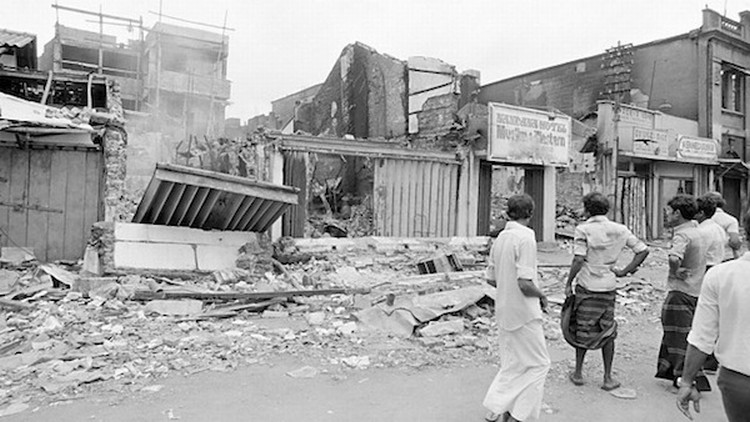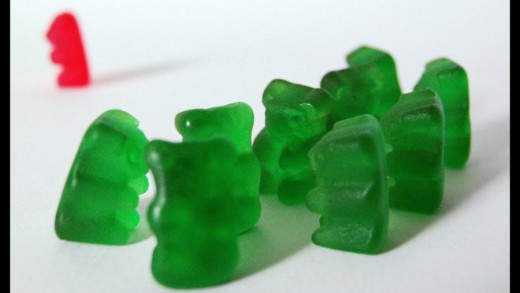Thirty-two years ago on Friday, anti-Tamil riots burned a hole into the South Asian island nation of Sri Lanka that it still struggles to close. For many of us in the Canadian Tamil diaspora, it is an emotional reminder of not only what we had lost in Sri Lanka but also what we have gained in Canada in return.
In 1983, the seaside capital city of Colombo and neighbouring towns were engulfed in flames as a gruesome pogrom was unleashed on ethnic minority Tamils. Carried out by organized mobs, almost exclusively made up of ethnic majority Sinhalese who were aided and abetted by senior government officials, the riots lasted from July 24 to July 30, 1983.
When the fires had burned out and the blood cleaned off the streets, thousands of Tamils had died, tens of thousands were injured, and tens of millions of dollars’ worth of mostly Tamil-owned homes and businesses were left in ruins. More than a few escaped death thanks to quick-thinking Sinhalese and Muslim neighbours who sheltered them.
It was not the first anti-Tamil riots to rock Sri Lanka. But the 1983 race riots, or Black July as it is now commemorated, became one of Sri Lanka’s most defining historical moments. It sparked the prolonged civil war for a separate Tamil state, which claimed nearly 100,000 lives and displaced hundreds of thousands more, before coming to a violent end in May 2009.
Black July also drove thousands of Sri Lankan Tamils to seek refuge in other countries. They arrived at the borders of India, Australia, United States, the United Kingdom and beyond, their pockets weighed down by hurt and humiliation, Almost 2,000 of them made their way to Canada thanks to a Special Measures program approved by the federal government.
In his soon-to-be-published landmark study of the Canadian Tamil diaspora, Pain, Pride, and Politics: Social Movement Activism and the Sri Lankan Tamil Diaspora in Canada, author Amarnath Amarasingam explains that Sri Lankan Tamil migrants benefitted from large-scale changes to Canada’s immigration policy in the 1960s and 1970s, early Tamil organizational lobbying in Canada, and the “turbulence that marked Canadian immigration and refugee determination in the 1980s.”
Regardless of how they came to settle in Canada, the Sri Lankan Tamil migrants who arrived after Black July turned adversity into opportunity and laid the foundations of the present Canadian Tamil diaspora.
Since the mid-1980s, the Canadian Tamil community has grown to nearly 250,000, although official 2006 census data cuts that number in half. It boasts more than a dozen English- and Tamil-language newspapers, radio and television stations. The Tamil business directory runs over a thousand pages, and just this month two incubators were launched aimed at fostering even more Tamil entrepreneurship.
Two major Tamil Studies conferences are also regularly held in Canada, attracting scholars from around the world. Major suburbs in Ontario and Quebec house Hindu temples and churches owned and patronized by Canadian Tamils. Canadian Tamils also continue to be effective in political mobilization, and there are Canadian Tamil legislators in municipal and federal government with representation expected to increase across all orders of government.
Black July, therefore, was an enormously important turning point in Sri Lanka, but also marked, in a very real way, the birth of a successful and influential diaspora. The story of Canadian Tamils, which seemed nearly lost forever in the ashes and broken glass of a very different place in a different time, has survived. In the same 32 years, that story has also managed to weave itself, firmly albeit not always conveniently, into the larger narrative that we Canadians tell ourselves and the world.
It is a story worth re-telling this year, and many years hence.
Kumaran Nadesan left Sri Lanka in 1987 and came to Canada a decade later. He is an Ontario public servant and volunteers as an advisor-at-large to Sri Lankans Without Borders.
This article was originally published in the Toronto Star.
You can read more articles on TamilCulture.com by Kumaran Nadesan.
****************************************
Related Articles:

 Kumaran Nadesan
Kumaran Nadesan









